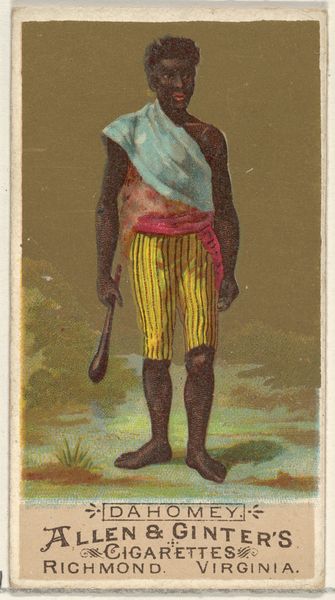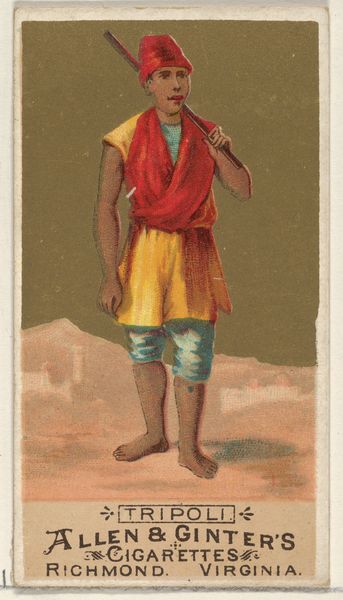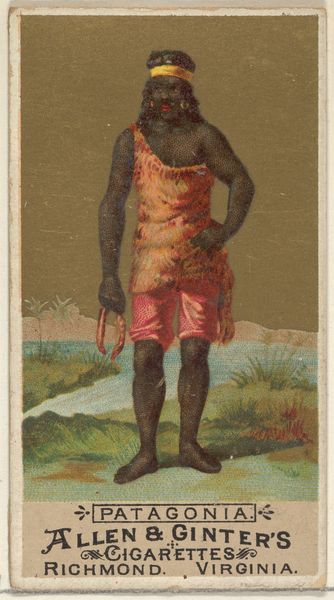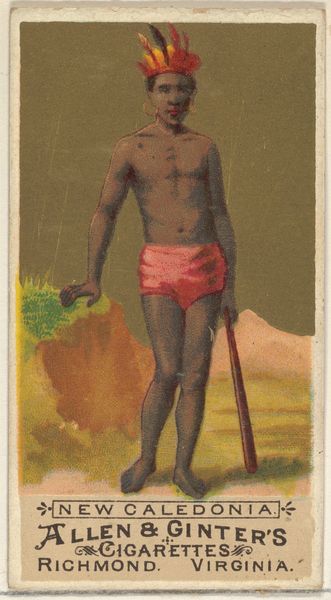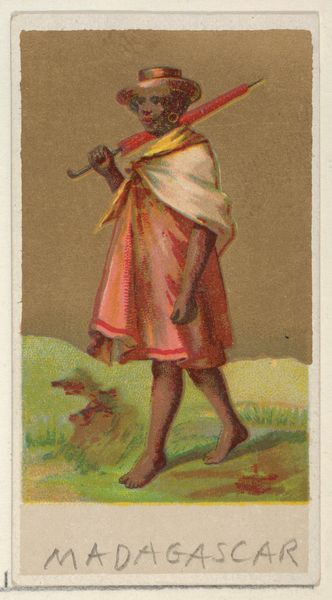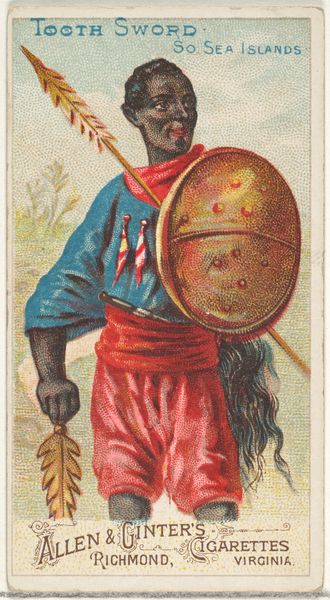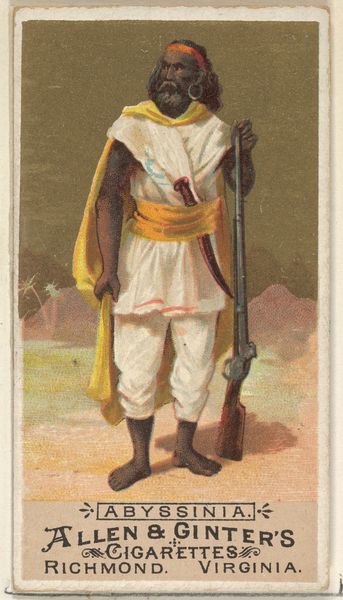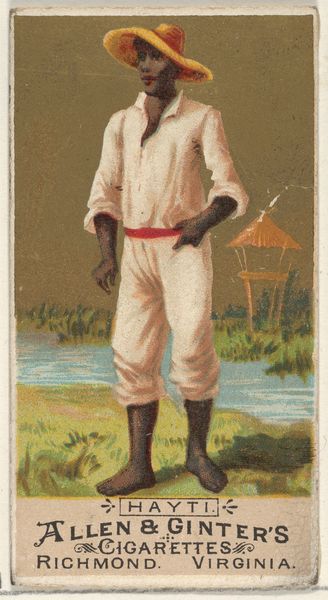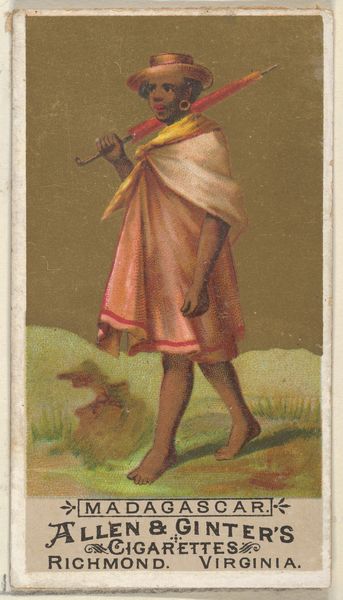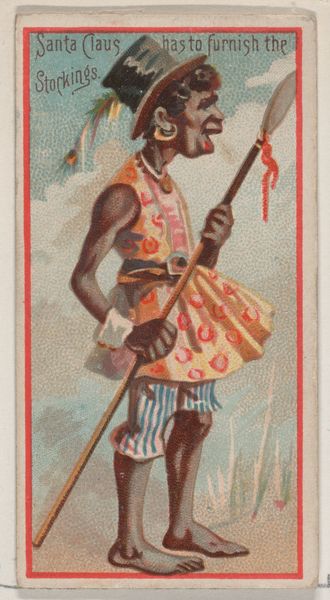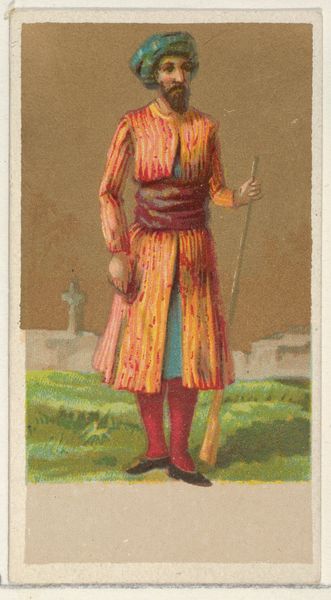
Dahomey, from the Natives in Costume series (N16), Teofani Issue, for Allen & Ginter Cigarettes Brands 1886 - 1900
0:00
0:00
drawing, coloured-pencil, print
#
portrait
#
drawing
#
coloured-pencil
# print
#
caricature
#
caricature
#
figuration
#
coloured pencil
#
orientalism
#
genre-painting
Dimensions: Sheet: 2 3/4 x 1 1/2 in. (7 x 3.8 cm)
Copyright: Public Domain
Curator: This piece is one from Allen & Ginter's "Natives in Costume" series, specifically the "Dahomey" card from the Teofani Issue, which dates between 1886 and 1900. The print employs coloured pencil, presenting us with a genre painting style tinged with orientalism. Editor: Well, immediately, the striking combination of colours catches my eye. There’s a forced vibrancy—a deliberate exoticism in the presentation. I’m sensing a powerful undercurrent of misrepresentation. Curator: The series, part of Allen & Ginter's larger advertising strategy for cigarettes, capitalized on public fascination with foreign cultures, aiming to familiarize American consumers with images of distant lands and their inhabitants, regardless of accuracy. These cards often perpetuated stereotypical depictions. Editor: Exactly, and the symbol of the “savage” is all too present here. Note the club or bludgeon the figure is holding—an iconographic shorthand for barbarism, reducing complex social structures to a single, loaded object. And observe that gaze. There's an unnerving stiffness about it, lacking nuance. Curator: These cards, mass-produced and widely circulated, played a crucial role in shaping public perception of foreign peoples and places during a period of intense imperial expansion and the rise of anthropological theories justifying racial hierarchies. Editor: Right, the colors, the props, even the composition is designed not to inform, but to reinforce existing cultural biases. The symbolism relies on visual tropes already established in the popular imagination to conjure a world of difference and inferiority. Even the title—'Dahomey'—is presented as a label, further stripping away individual identity. Curator: It’s a potent reminder of the problematic relationship between art, commerce, and the construction of identity, serving as a stark historical artefact reflecting attitudes of its time. The piece highlights how images are actively complicit in broader power structures. Editor: Yes, these small pictures become cultural megaphones. It gives you chills when you think about all those biases, amplified by art, echoing through history. It reminds us we need to decode, critique, and understand them if we're ever to move past them.
Comments
No comments
Be the first to comment and join the conversation on the ultimate creative platform.
